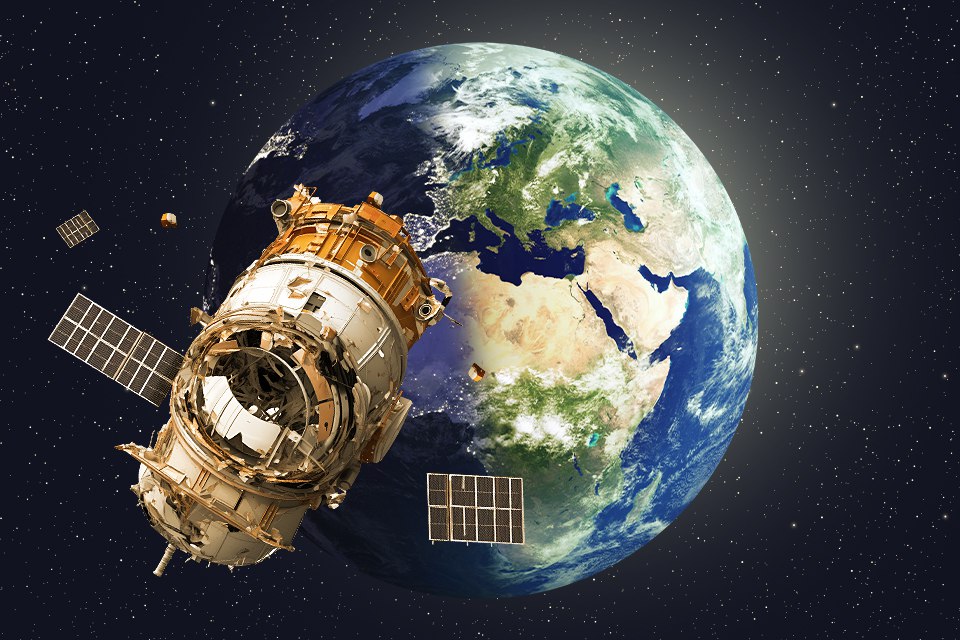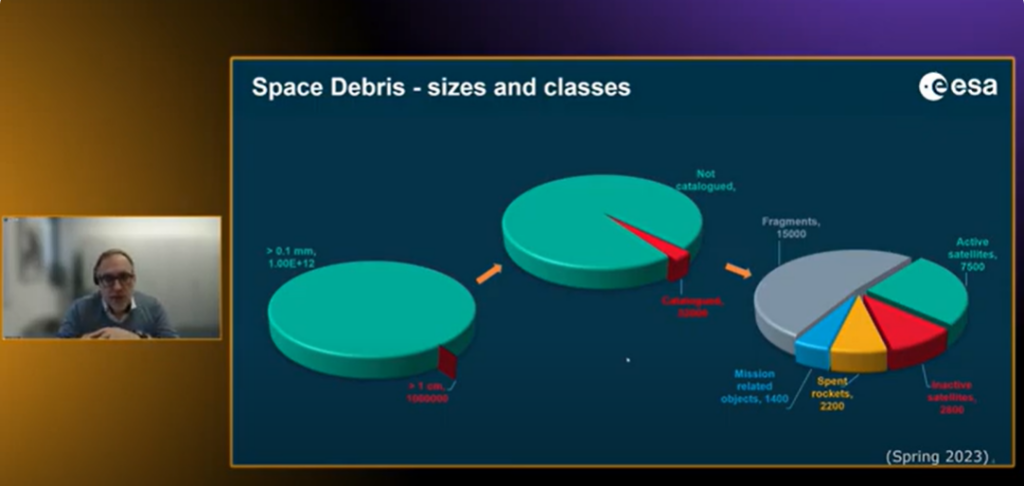On Friday, 15 December, we all had the opportunity to listen to an online lecture by Tim Florer of the European Space Agency (ESA) on space debris. He spoke about numerous dangerous objects that are currently orbiting our planet, about the ways to detect them, and about what can be done to prevent them from causing a catastrophe.

A narrative about space debris
Ukrainians had a rare opportunity to hear the opinion of a real expert on this important issue. It happened on 15 December. The ESA specialist told people interested in space exploration about the problem of space debris, which he has been dealing with professionally for many years.
The opportunity to hear him was made possible by the efforts of the NGO Association Noosphere and The Universe. Space. Tech magazine, which celebrated its 20th anniversary the next day. The lecture itself was held in video format and broadcast on Youtube. It lasted about an hour and was delivered in English with translation into Ukrainian.

Why debris in orbit is a big problem
In his talk, Florer managed to touch on all the main issues related to space debris. First of all, the numbers of stuff in orbit are impressive. Scientists are currently tracking about 32,000 objects in near-Earth space, and the satellites that are still operating account for only a quarter of this number.
The rest can be classified as space debris in one way or another, with actual debris accounting for almost half of the total number of objects. They are dangerous because they have a high velocity, so they can easily damage spacecraft when they collide with them.
If the spacecraft itself is destroyed in a collision, its own debris can pose a threat to other spacecraft. This can trigger a cascade of catastrophic events called the Kessler syndrome.
To prevent this from happening, scientists carefully monitor what is happening in orbit. And it’s not just the US military — which is the main authority in this area — that does this. According to Florer, ESA also has this capability. For this purpose, the organization has its own telescopes and radars.
What Tim Florer was asked about
At the end of the lecture, everyone had the opportunity to ask Tim Florer questions, which he answered with high competence. The audience was interested in a variety of things. Some were concerned about the possible radioactivity of space debris. Others wanted to know more about the danger it poses to people on Earth.
Many questions concerned the methods by which spacecraft can be protected from debris circling the orbit. Florer explained in detail that currently, the main and perhaps only way to do this is to adjust the orbits of satellites and the International Space Station to divert them from the collision path.
Among other things, he was asked whether ESA was considering the scenario that some country would try to use anti-satellite weapons to hit several targets in orbit at once. This could lead to a huge amount of debris.
Florer acknowledged that this could indeed be a disaster and would greatly complicate space exploration. To prevent such a scenario, ESA relies on international agreements that are currently being prepared.
In addition, great hopes are placed on the fact that in the event of a massive use of anti-satellite weapons, the aggressor country itself will also not be able to fully use its own orbital infrastructure. Therefore, it is likely that it will simply not dare to take such a step.

